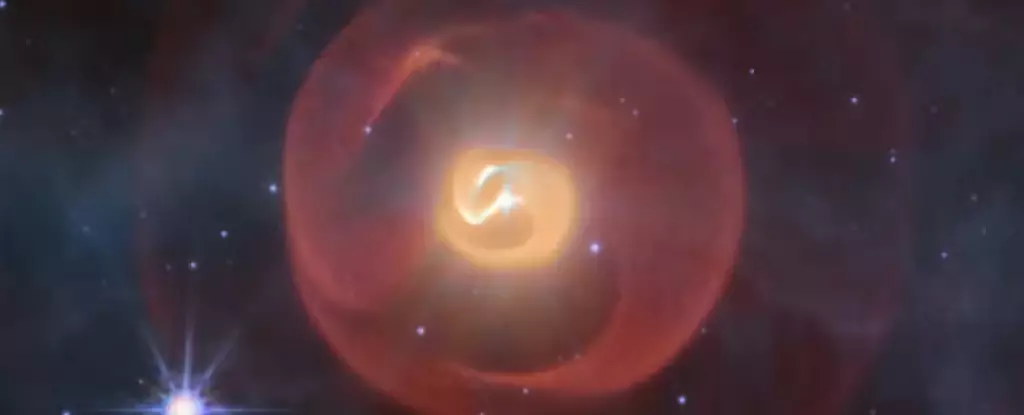In the grand theatre of the universe, few phenomena captivate researchers and enthusiasts quite like the dramatic death throes of the most massive stars. These celestial giants, approaching their demise, undergo violent processes that leave a lasting imprint on their surroundings—forming intricate nebulae and seeding the cosmos with the fundamental materials necessary for life. The recent advancements in astronomical imaging, particularly with the James Webb Space Telescope (JWST), have allowed us to peer deeper into these explosive endgames, revealing complexities that challenge prior assumptions and open new horizons for understanding the life cycles of stars.
Massive stars, especially Wolf-Rayet stars, exist on a precariously short timeline—a cosmic blink of an eye. Their final days are marked by intense mass loss, where they shed their outer hydrogen layers at a furious rate, revealing their heavy, carbon-rich cores. This process not only signifies their imminent explosion as supernovae but also contributes significantly to the cosmic dust that becomes the building blocks of planets, complex molecules, and, ultimately, life itself. What makes these dying stars even more intriguing is their frequent companionship with other stars—forming binary systems that dramatically influence their evolutionary paths.
The dynamics within binary pairs of Wolf-Rayet stars are particularly compelling. The ferocity of their stellar winds—powerful streams of particles expelled at tremendous velocities—interacts in a manner akin to cosmic storms colliding. When these stellar winds clash, they compress each other, creating regions where dust can condense from the stable, carbon-rich outflows. These dust grains are vital; they represent some of the earliest solid materials in the universe, remnants born before planets even existed. The resulting nebulae often exhibit mesmerizing spiral patterns, reminiscent of sprinkler water sprays viewed from above—an exquisite display of natural choreography driven by gravity and stellar winds.
However, our recent observational journey with JWST shattered some of our previous expectations. Originally, astronomers anticipated that nebulae like Apep would resemble simple, elegant pinwheels. Instead, JWST revealed a more complex and dynamic structure: a wind-sock-shaped nebula formed by two Wolf-Rayet stars emitting near-equal-strength winds. This configuration creates a broad cone of dust rather than a tidy spiral, emphasizing that these systems are far more turbulent and unpredictable than simplified models suggested. The infrared imaging, capable of capturing heat differences across cosmic distances, mapped hot and cold regions within the nebula, providing unprecedented insights into the physical conditions and processes at play.
Adding further intrigue is the discovery of multiple concentric dust shells surrounding the Apep system. These shells, evenly spaced and progressively cooler, suggest a history of episodic mass-loss events—like cosmic bark rings marking earlier seasons of stellar activity. Determining their origins led researchers to reassess the system’s architecture, revealing the presence of a third star, essentially making Apep a triple star system. This third star appears to influence the dust shells, carving out cavities and affecting the nebula’s shape—a cosmic sibling adding complexity to an already intricate family portrait.
The implications of these findings transcend mere aesthetics. They reshape our understanding of stellar evolution, particularly regarding how massive stars die and contribute to the universe’s chemical enrichment. The intricate interplay between multiple stars and their winds produces diverse nebulae, hinting that stellar death is rarely a solitary event. Instead, it often involves familial interactions that sculpt the surrounding dust and influence subsequent star formation cycles.
Yet, amidst this scientific wonder, it’s vital to acknowledge the humility and ongoing uncertainty that characterize our quest for cosmic comprehension. Each new image—or model—reveals a universe more nuanced than we imagined. The initial assumptions about.wind speeds, star rotations, and even the presence of a third stellar companion in systems like Apep have been challenged, illustrating the importance of continually questioning and refining our models. In essence, every discovery is a reminder of how little we truly understand and how much there is still to explore.
The beauty of these celestial phenomena is not merely aesthetic but also profound in its implications. These violent stellar deaths forge the complex elements that compose planets, life forms, and perhaps even civilizations. Observing and deciphering the intricate dance of stars and dust in systems like Apep enriches our appreciation for the universe’s creative chaos—a chaos that simultaneously destroys and creates on scales both enormous and intimate. As we continue to push the boundaries of technology and knowledge, it becomes clear that the universe’s most compelling stories are often written in the language of turbulence and transformation.


Leave a Reply